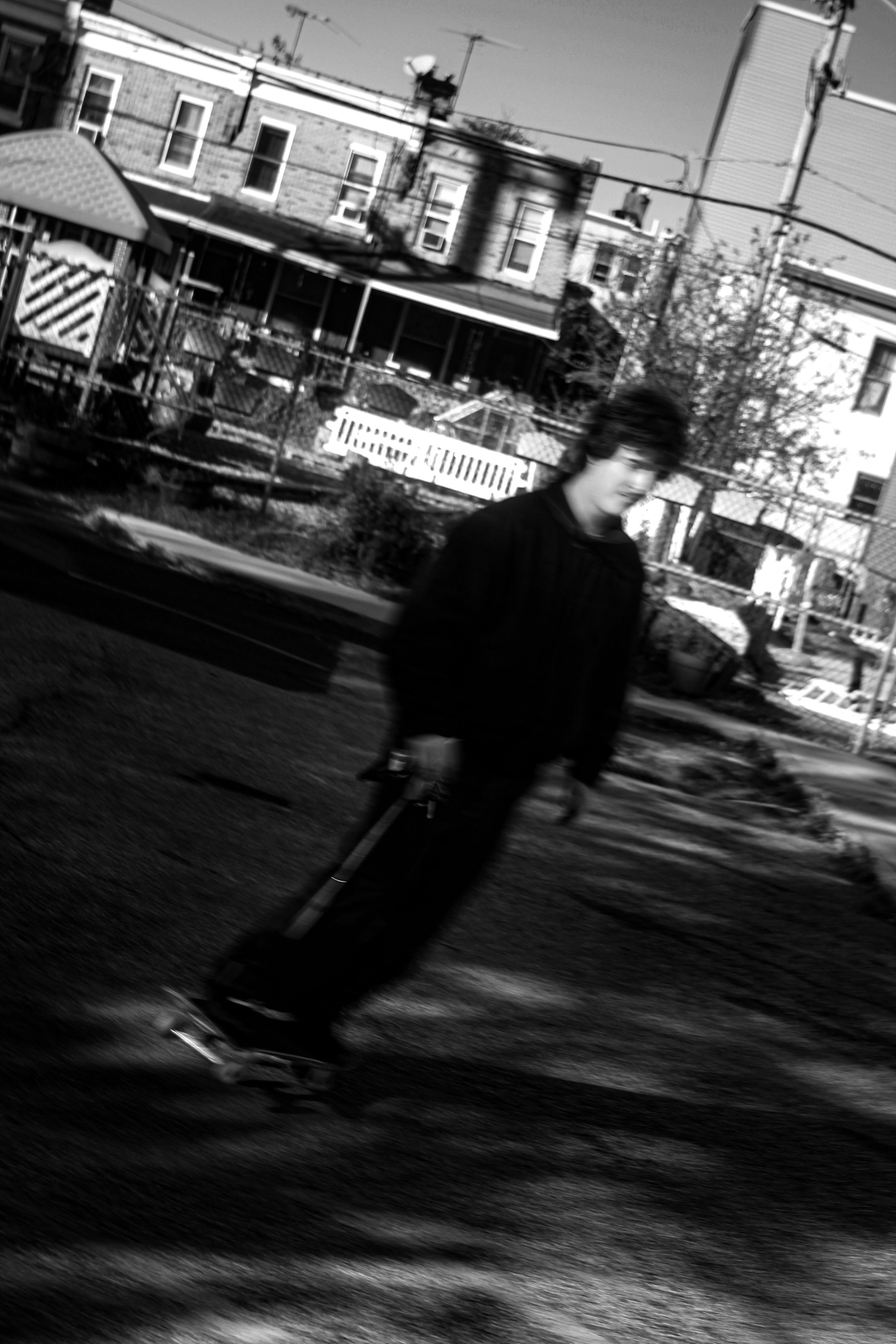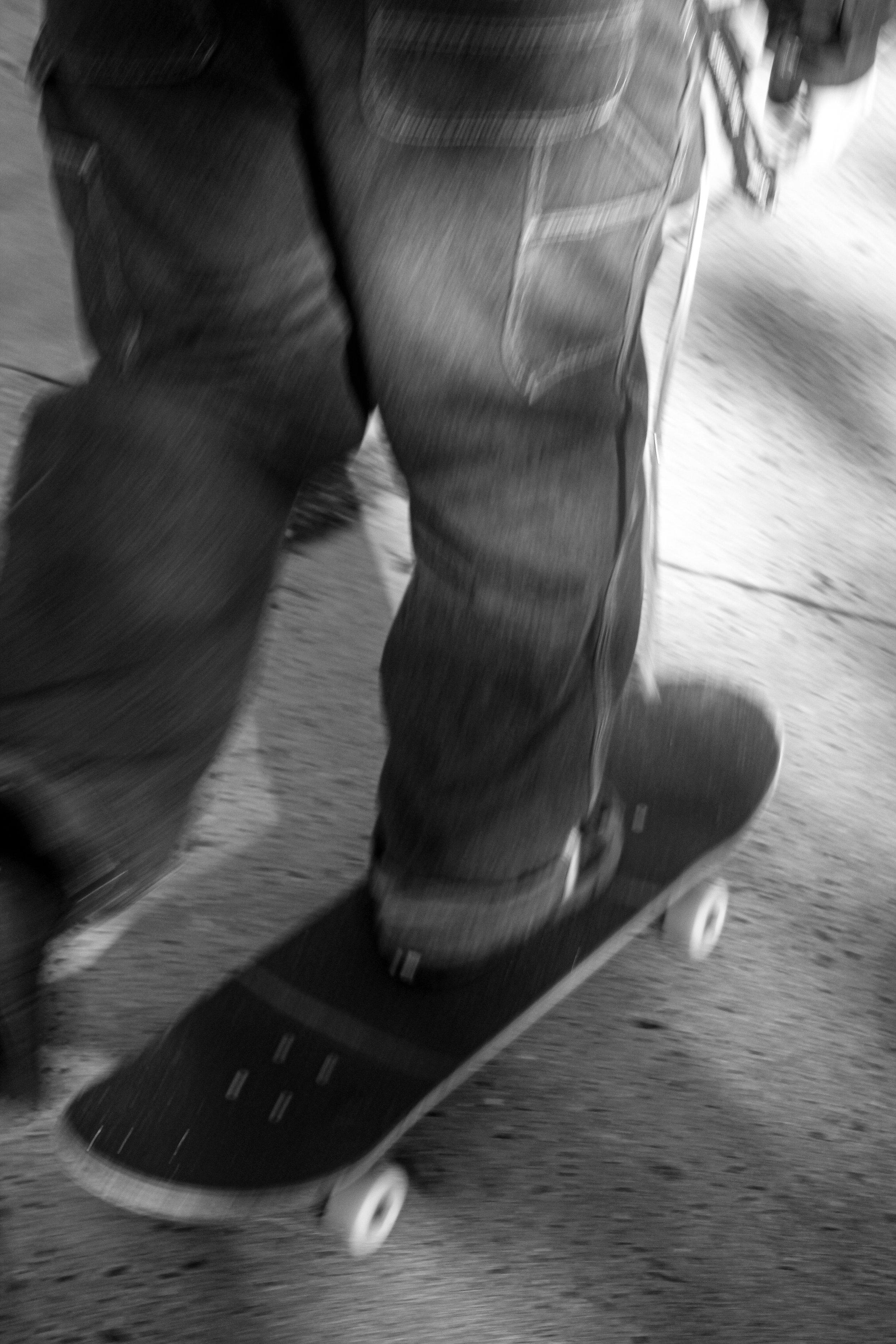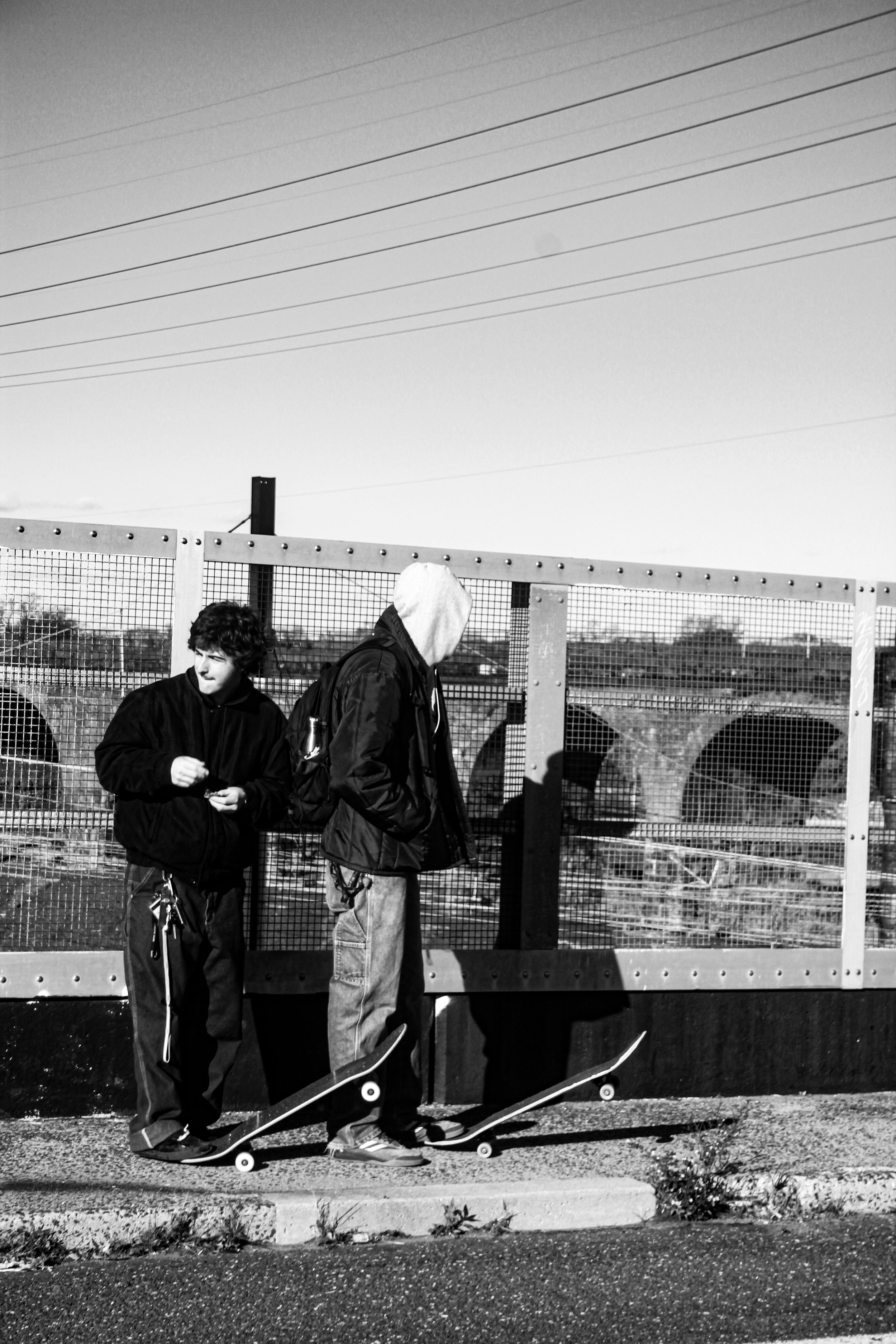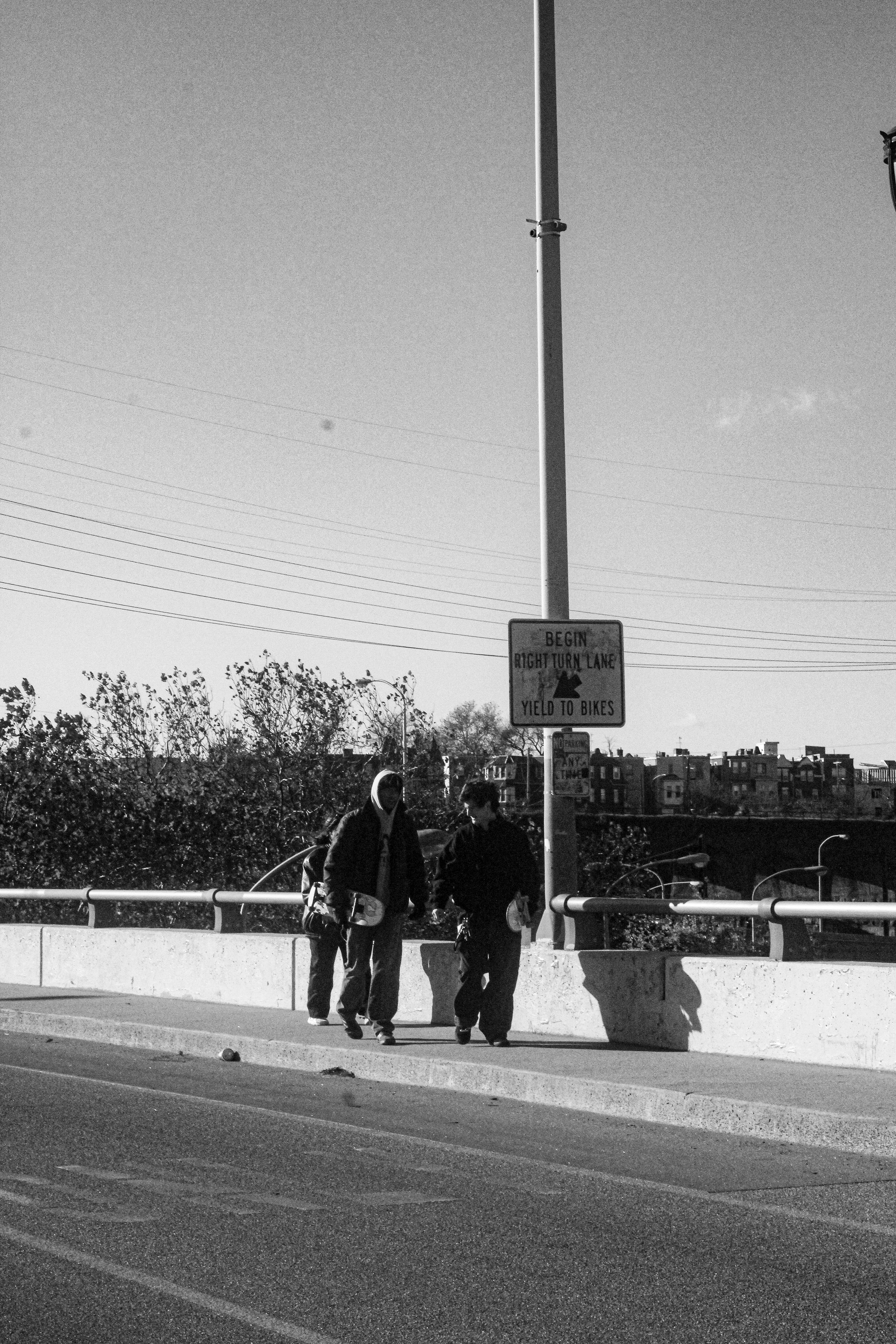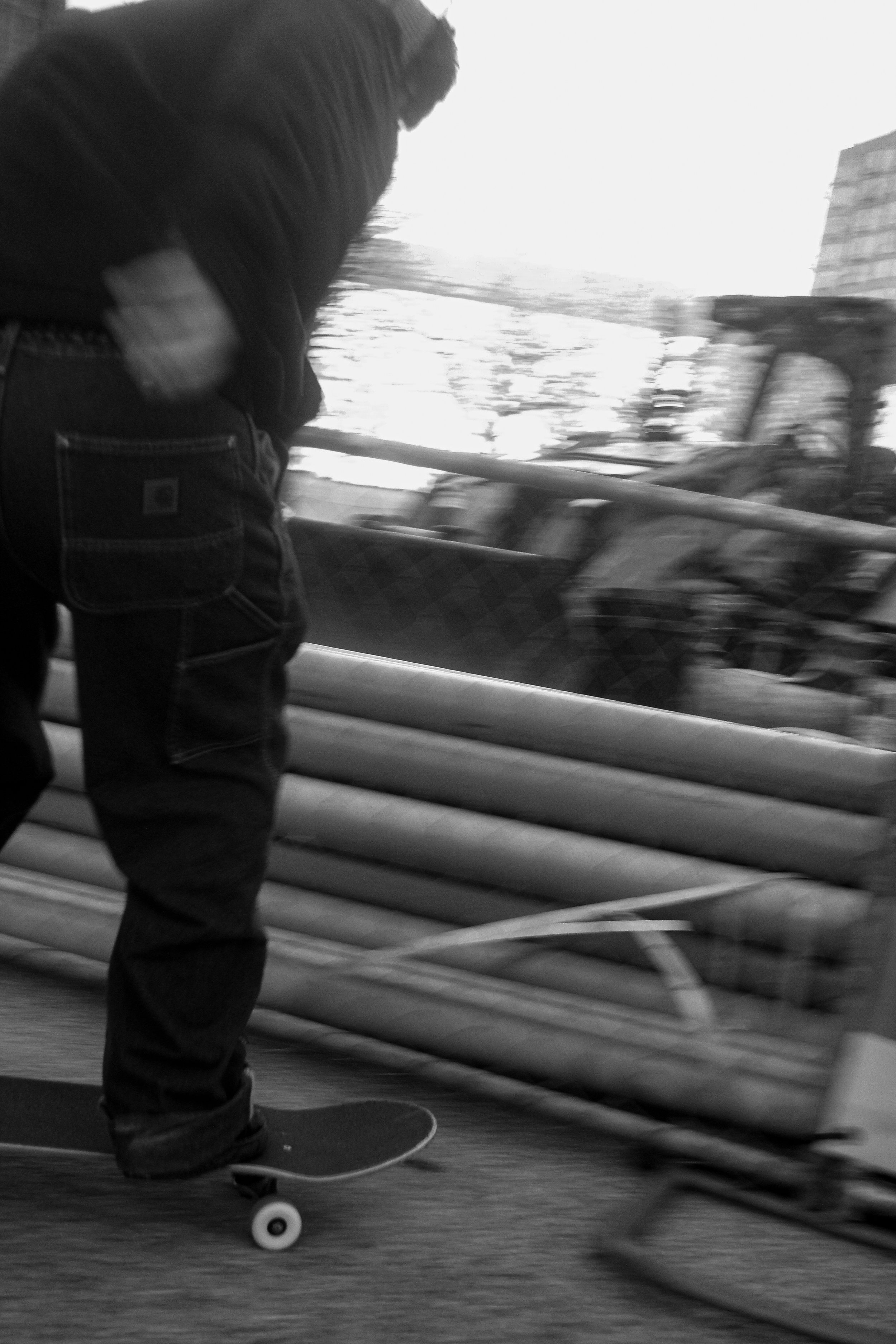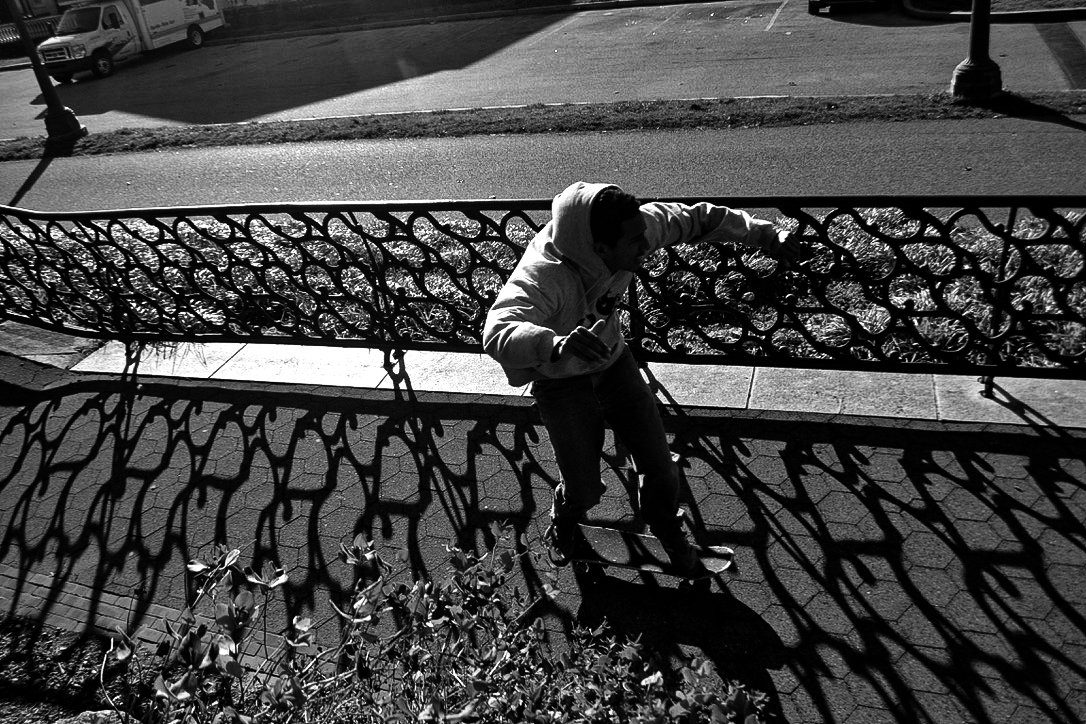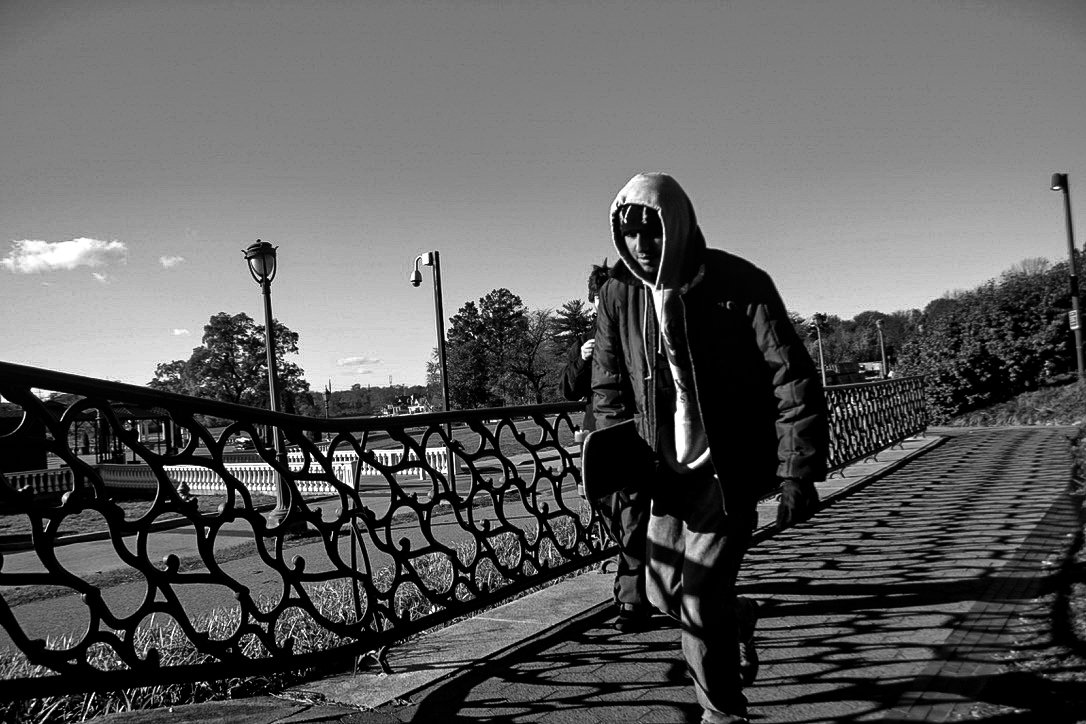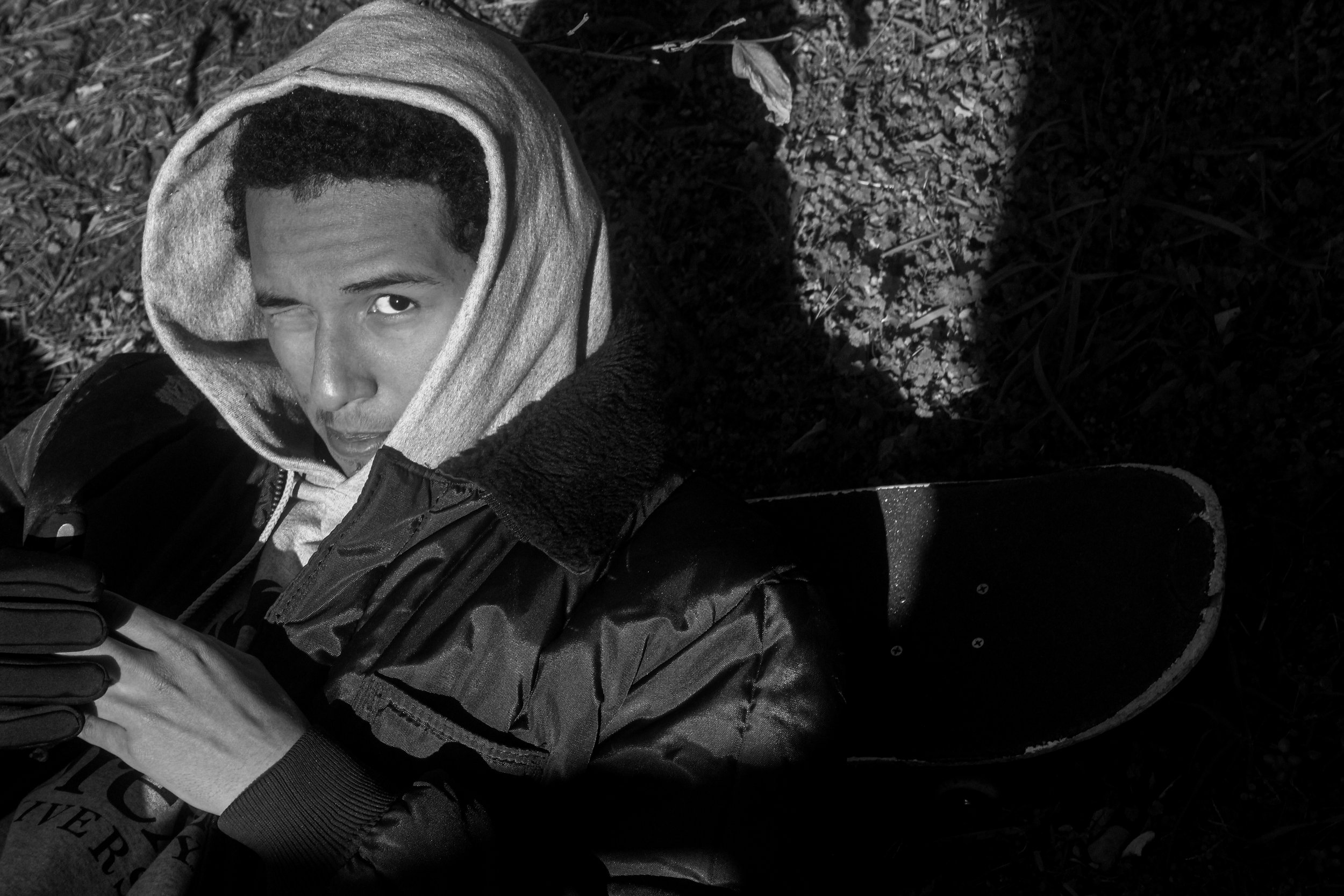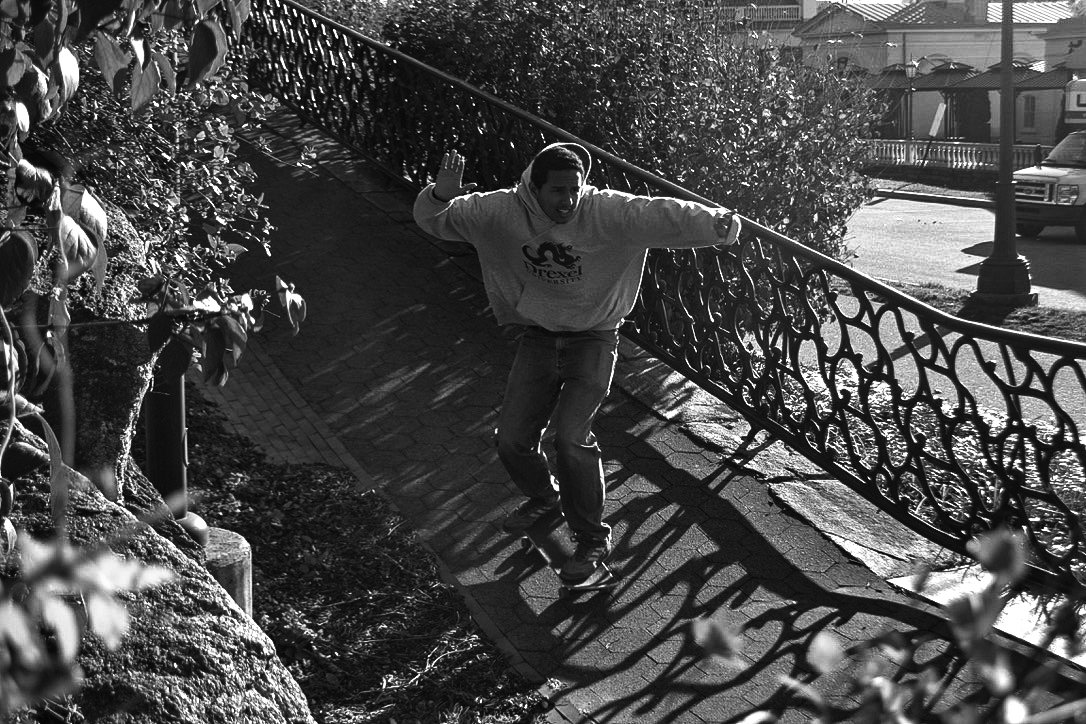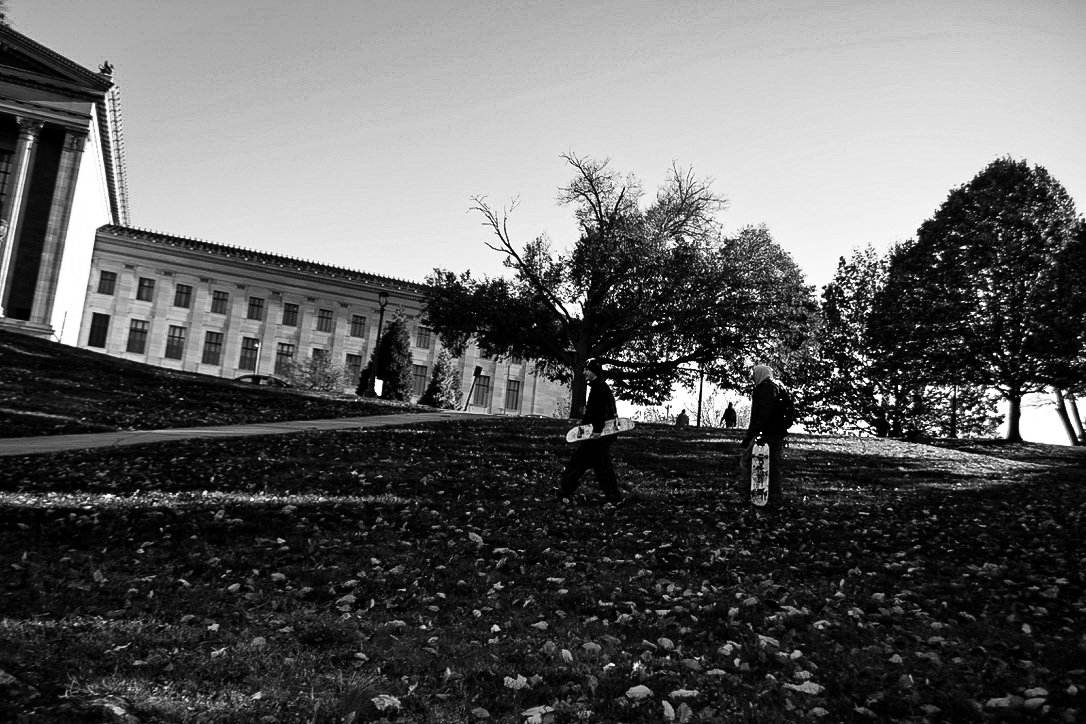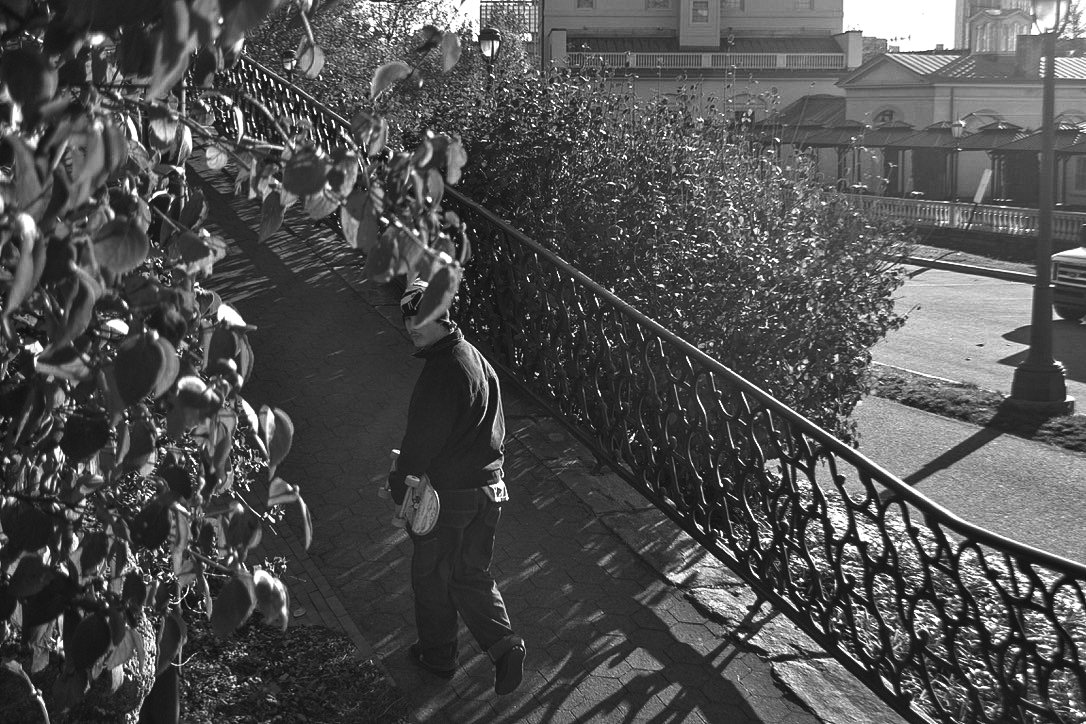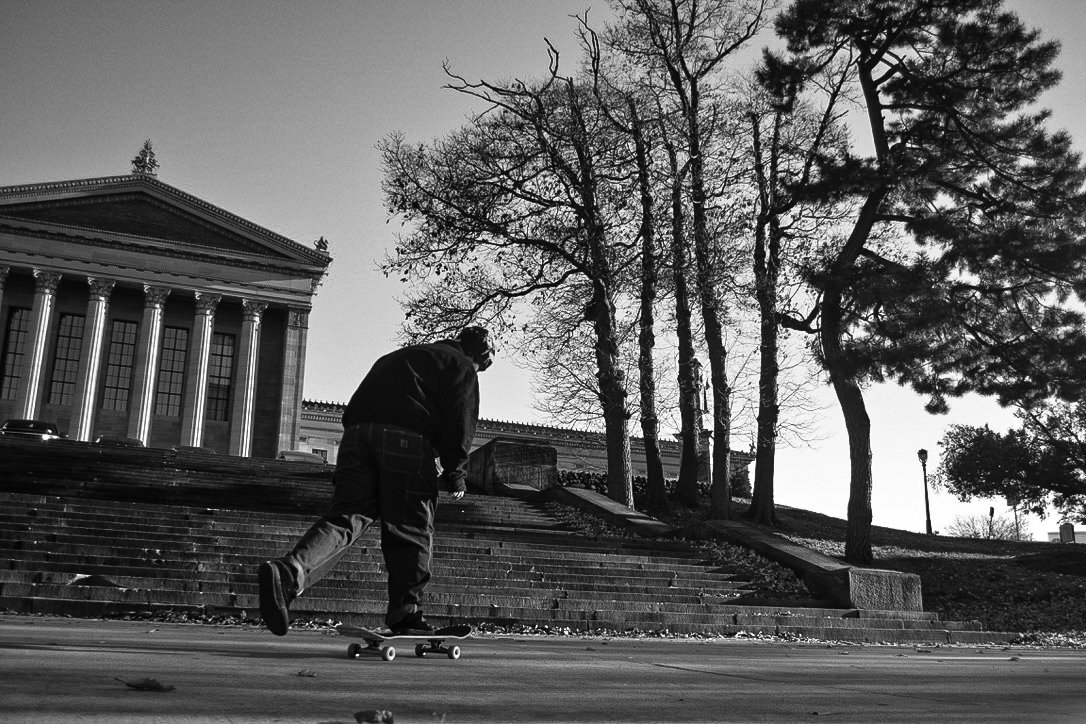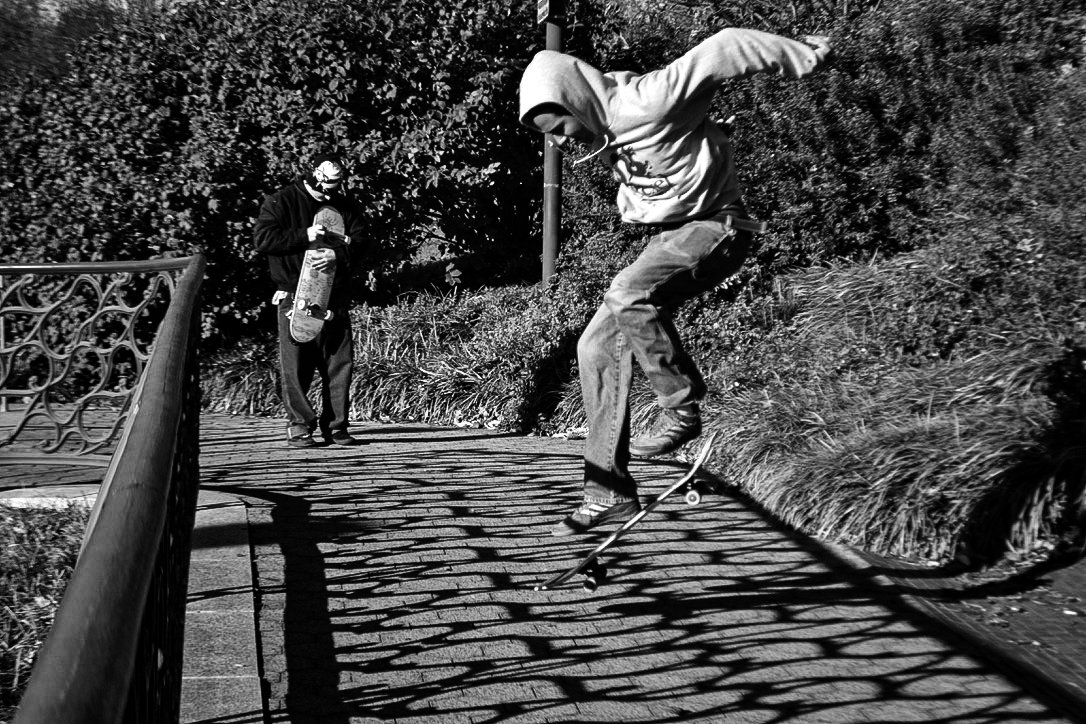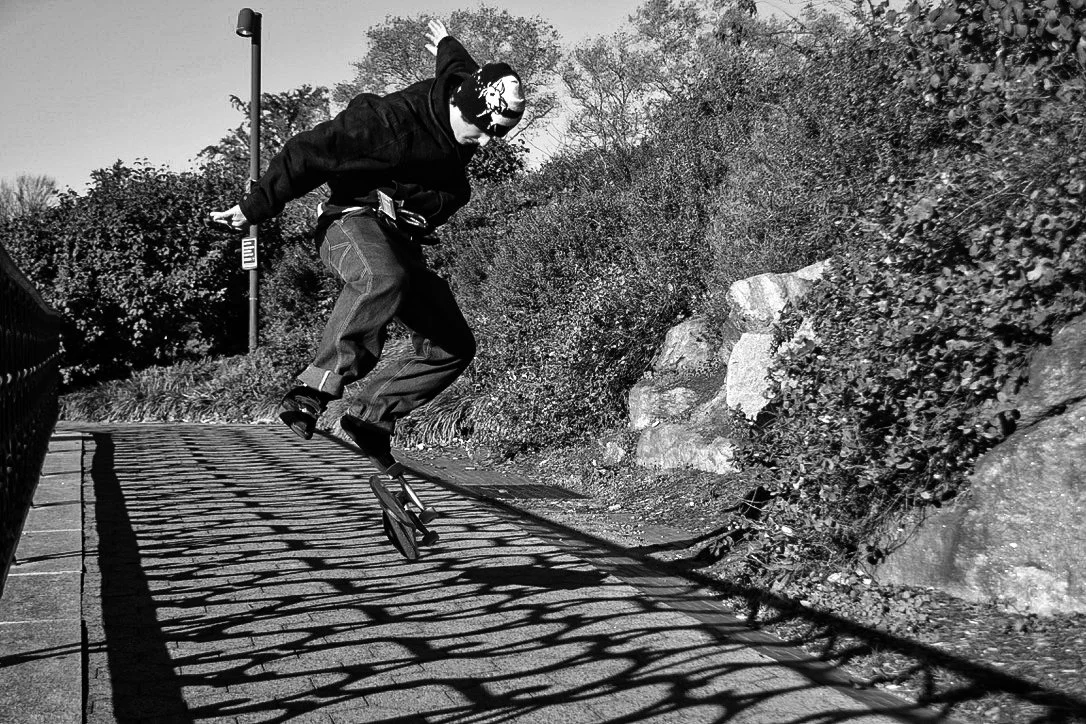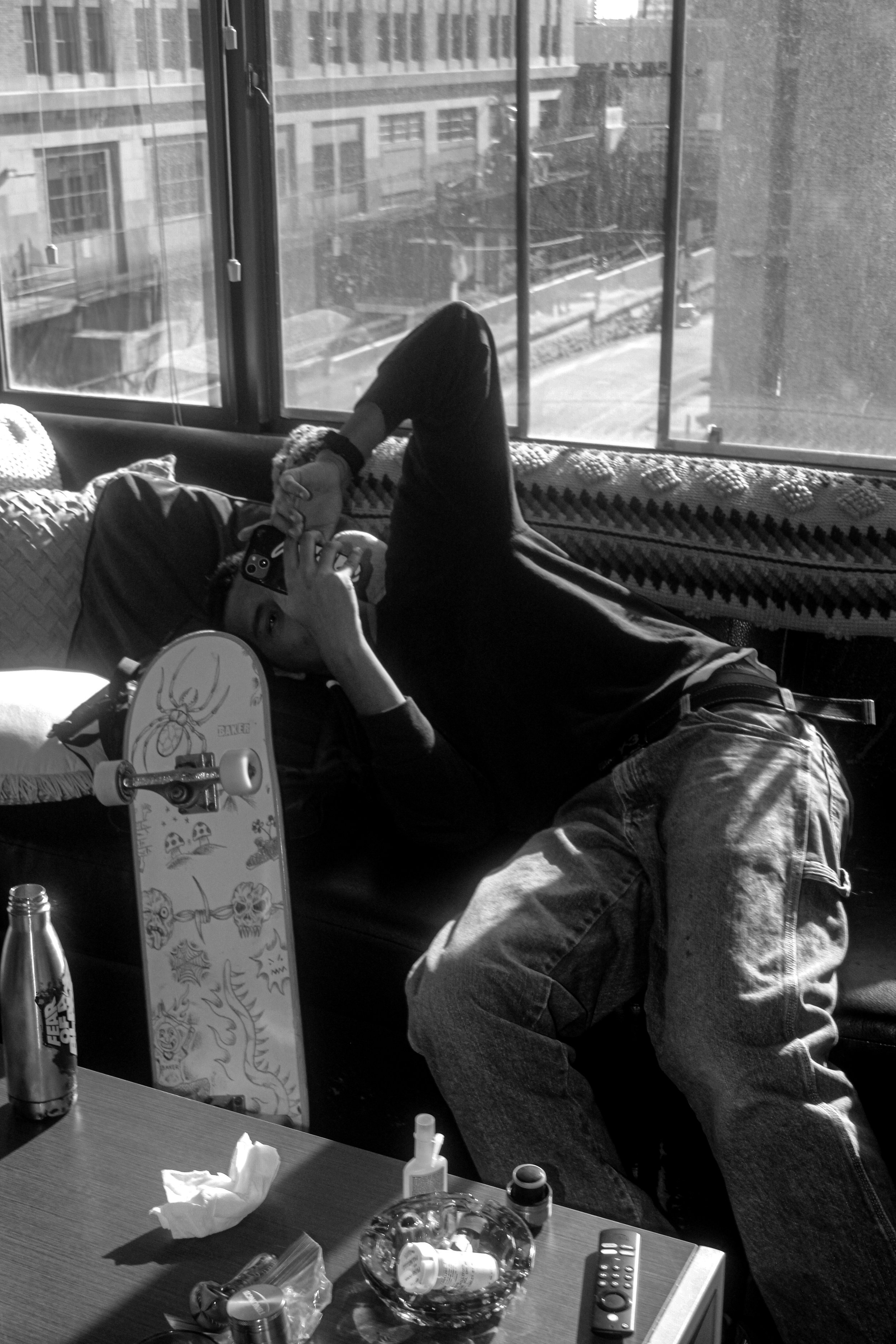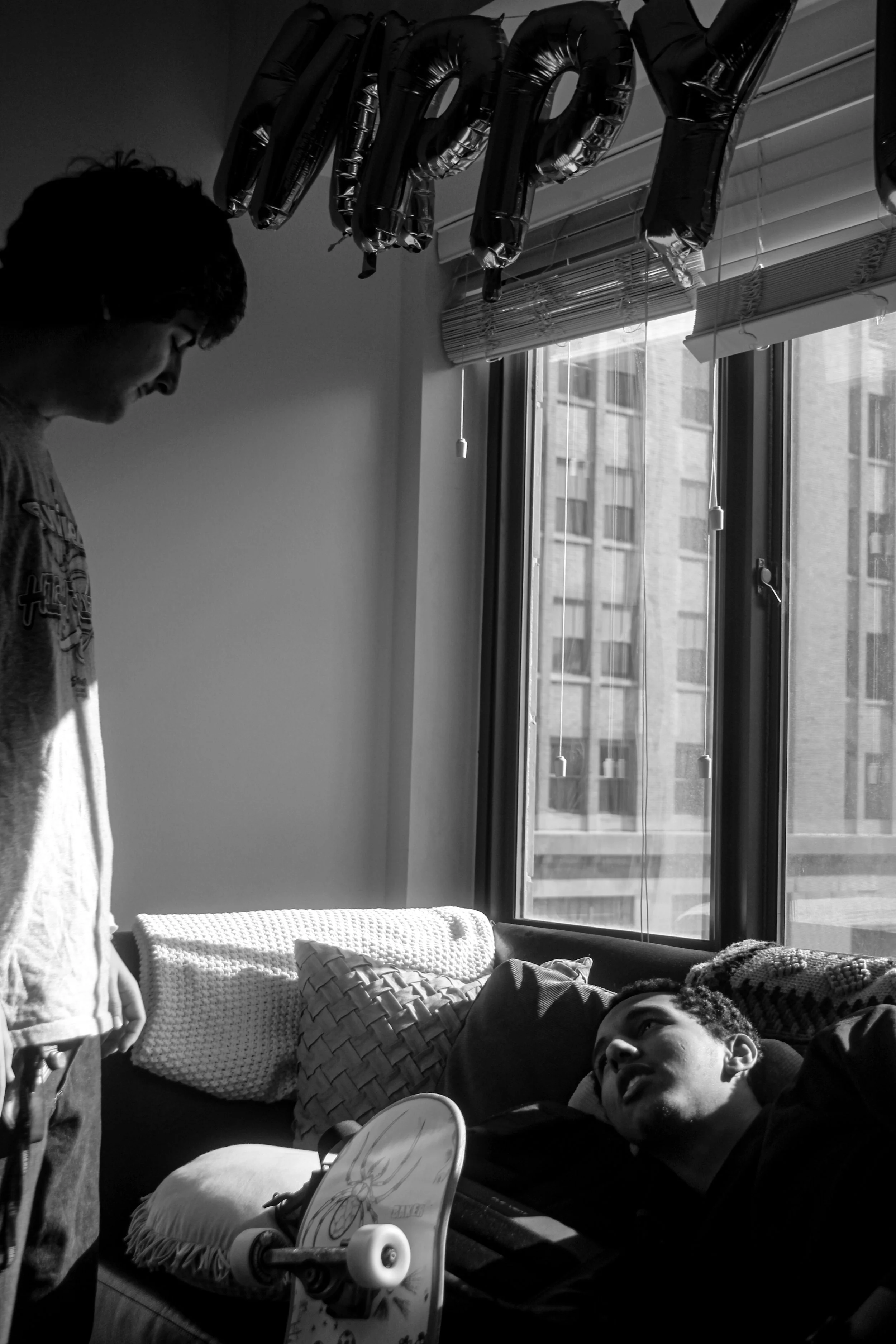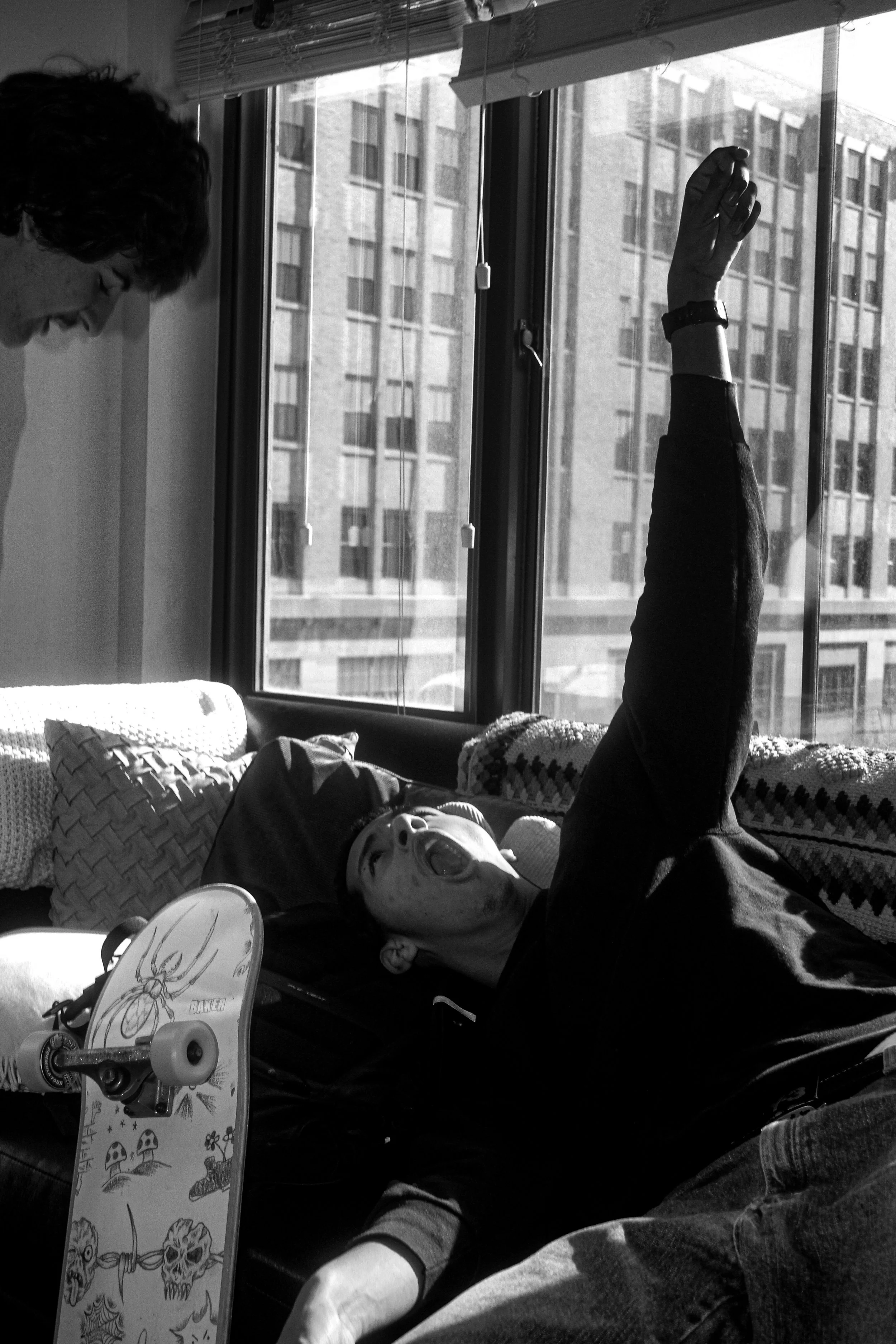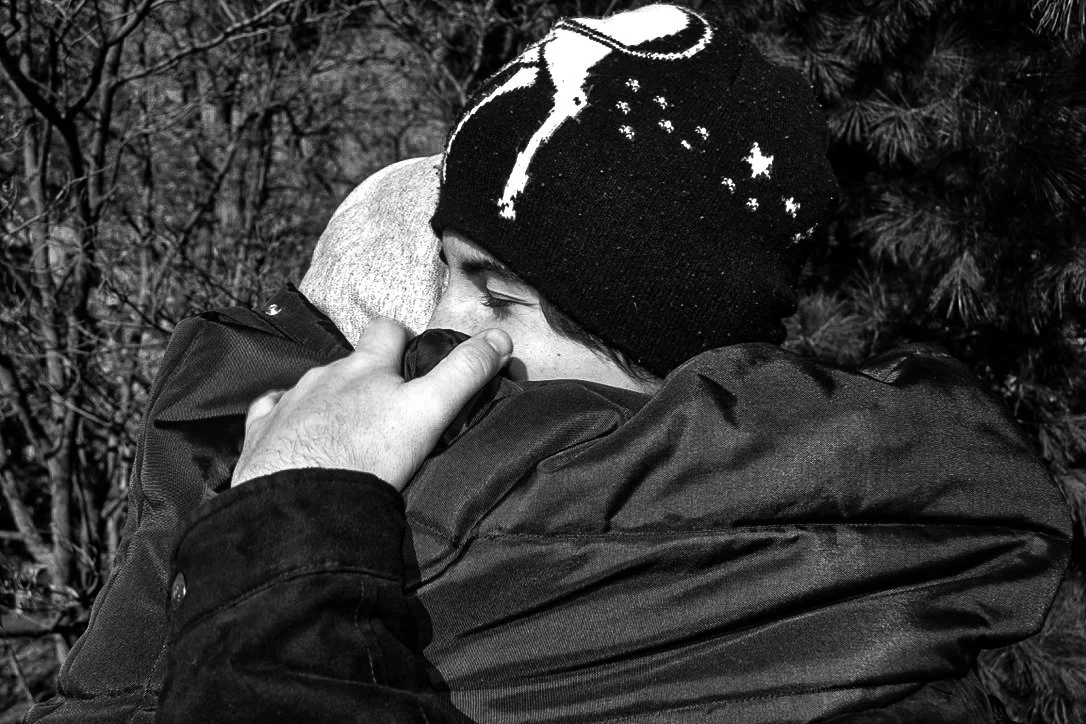Skate Culture; Catalyst for Creativity
Written By: Sam Schwartz
Photography by: Lainey Wriggins
Skate culture is a catalyst for creativity. Meet some West Philly skater-creatives sparking a reaction between skating and art.
Skate culture has always promoted and pushed the boundaries of style; its impact is evident in music, movies, art, and fashion. Baggy pants (Blind and Polar Big Boys) and vintage t-shirts, for instance, are synonymous with skaters. Brands like Supreme, Palace, Bronze, and Dime placed skateboarding style on the map, cementing street and skatewear as a style powerhouse. Growing brands, Fideiced, Red Rum Dog Pound, and F*** Skating, heavily influenced music scenes, such as punk scenes with bands like Butthole Surfers and The Misfits. Movies also take inspiration from skate culture, such as ‘Photosynthesis’ by Joe Castrucci, to skate scene documentation movies, like ‘Kids’ by Larry Clark and written by Harmony Corrine. Harmony explains that his later films, such as ‘Gummo’ and ‘Trash Humpers’ also took inspiration from the non-skating sections of skate films.
Philly has been a skate city, with the former Love Park being the centerpiece. Years later, even after its demolition, the culture remains strong. In Philadelphia, colleges attract creatives and freethinkers, and this mindset goes hand in hand with skating. The University City area is home to some of the most talented skaters on and off the skateboard. One group of friends in u-city skate together often. This group is a mix of Drexel and Penn students who find central skate spots or, as they refer to, neutral territory.
Yanik Evers-McKoy is a sophomore at Drexel University who has been skating for ten years. When he’s not skating (or studying), McKoy spends his free time developing footwear under the name Stasis. His interest lies in the intricate aspects of creating a shoe that feels good, looks good, and performs well. In addition, he believes footwear should reflect the environment, be stepped on, rolled over, and destroyed or damaged. Throughout the design process, McKoy contemplates the differences between ordinary consumers versus skaters in their perception of objects. He says, “As a skater, you have an intimacy with the ground.” Skating from his freshmen dorm to the cafeteria, he noticed a rough patch of ground which he now avoids for a smoother ride. As McKoy continues his product design trajectory at Drexel, he wants to stay true to his roots and work with skate brands on footwear. McKoy finds skating and art inspiration in Gou Miyagi, a Japanese skateboarder who defies the traditional skateboarding rules, and Nobuo Iseki, who documents skate spots in Japan. Moreover, McKoy finds inspiration in parody skate videos of Late Night Stars and Meta 5 by John Clotfelter, who records complex tricks set in New York back allies.
Johnathan Xue is a Junior at the University of Pennsylvania who has been skating for over seven years. Xue, also known as ILUVLUV<3, is a DJ and artist working mainly in sculptures and other mediums. Skating and the community give him the freedom of self-expression in a nonjudgmental space while also inspiring him through the types of music listened to by other skaters. Xue’s DJ moniker ILUVLUV<3 is inspired by, as he described it, “affinity for the idea of love but the inability to harness it himself.” He loves playing an eclectic mix of 2000s pop, Rap, Trap, cloud rap, Soul, House, EDM, Electronic, and Hyper-pop. He finds that through skating, he can communicate himself through perfection and hyper specification “everything needs to be intentional, with elements of unintentional only enhancing the experience.”
Aaron Taylor, a sophomore at Drexel University, has been skating for around eight years. Skating heavily influences Taylor’s creative work, especially in Sekanson, his line of hats, shirts, and earrings. Taylor takes inspiration from contemporary skate brands such as FA, Hardies, Dime, and Palace, who push the limits of defining a skate brand through outlandish products. The idea that skate brands can take inspiration from their culture and apply it to any facet of life is what fascinates him. Taylor views skating as a large pool of inspiration from many eras of the culture: evolving from the LA dog town era to the east coast supreme, then to the democratization of skate culture with the internet boom, and, finally, the contemporary skate culture.
Alex Pane another sophomore at Drexel University, has been skating for six years. In his free time, Alex runs an art account called Cursor Domain, where he alters abstract photos to the point of his liking and then adds poetry as the caption. “Words carry so much meaning; my goal is to be devoid of tone,” says Alex. He creates something that everyone might misunderstand, but he doesn’t make it for everyone to understand. Alex’s work takes inspiration from the oversaturated and highly edited photos and films of Bill Strobek and Harmony Corine
These artists are shaping the zeitgeist inspired by skating and its culture. Of course, art, film, and fashion all inform their creative outlets, but it’s also a bunch of friends hanging out, skating, and creating.
